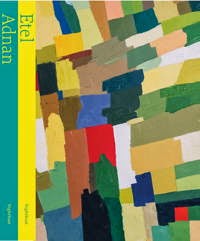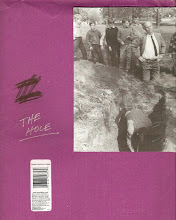 I have a strong impression of first hearing Corina Copp read her work. It was at the bar on 11th Street between Avenues A and B in the spring of 2006. What left a strong impression was a sense that her language was doing something—that it was having an effect on me—and yet I could not tell where it was coming from, what was holding it down so too speak. The language was like pure performance—a gestural language seeking a referent.
I have a strong impression of first hearing Corina Copp read her work. It was at the bar on 11th Street between Avenues A and B in the spring of 2006. What left a strong impression was a sense that her language was doing something—that it was having an effect on me—and yet I could not tell where it was coming from, what was holding it down so too speak. The language was like pure performance—a gestural language seeking a referent.Or seeking characters? Four years later Copp now pursues an MFA in play writing at Brooklyn College, studying under the play write Mac Wellman. Reading her plays “Office Killer” and “Manon Maria Braun,” I am struck by how suited her playful language work is to the theater, and specifically a theater that prioritizes action and gesture over plot or character development per se. Characters are ciphers for what can or cannot be said. Fairly routine dialogue will suddenly kick into language acrobatics. I like this about Copp’s plays. I like the sense that a language for the theater becomes possible again. Conditions of possibility lurk in the leveling of character and dialogue through gestural lyric. The problem goes back to Stein, and continues in Copp’s other mentor, Fiona Templeton, whose recent "Medead" (or “me dead” as I prefer to call it)—a phonemic based representation of the intercultural figure of Medea—resembles Copp’s own concerns with sonic, rhythmic, and metonymic language values.
There is content of course to Copp’s work. And it has to do with being a woman, and the violence that is enacted against women. It also has to do with sex, and identity and many other recurrent concerns of any theater. These concerns, evoked through schizophrenic speech, evoke what Copp calls a “deep threat” in an essay she has written about Poets Theater and Rodrigo Toscano’s Collapsible Poetics Theater for the 2nd issue of ON Contemporary Practice:
“What’s incredible is that Poets Theater is a threat to order, and that entities are threats to equilibrium. Threat is deep; even multiplicity is still threatening. Polyvocal pieces are more and more prevalent among poets and play writes, hinting at our effort to equalize (provoking discomfort with lack of distinction), create cacophonies of sound, resist traditional structural modes, etc. What follows from an effort to equalize is the dissolving of individual character traits. In much current writing, for instance, characters A, B, and C might variantly have nervous legs, low IQs, or violet auras or not—but often they are types who witness strangeness in a place (the theater) meant to show something.”
I like this phenomenological description of what Poets Theater might contribute to theater at large. A leveling of hierachies between the essential elements of theater, which are obviously not just plot, setting, character, and psychological motivation, but language as a form of action and the expression of embodied affect among interchangeable bodies—the chain of substitution of post-industrial serialization comprised by “types.” Theater then becomes, as Copp tells us, more like an equilibrium of forces. By writing poems as plays or plays as poems (I can’t which) Copp is channeling the forces which inhere in language and make up our lives.












No comments:
Post a Comment